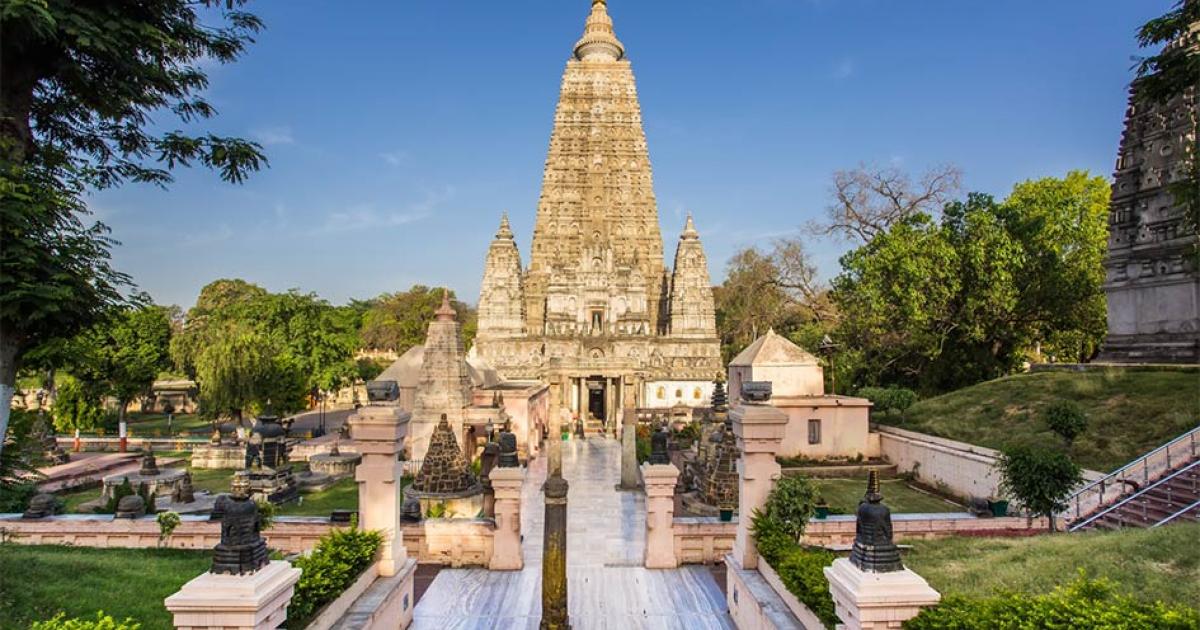
Why Bodh Gaya is Considered the Navel of the Earth
India is the birthplace of Buddhism and as one of the oldest faiths followed, there are many wonderous Buddhist sites. There is also a growing recognition of the country’s Buddhist heritage. One of the most holy Buddhist sites is Bodh Gaya, where the spiritual life of the Buddha is commemorated and revered by devotees from all over the world. Additionally, Bodh Gaya’s temple is one of the wonders of ancient Indian architecture.
The History of Bodh Gaya Temple, India
According to Buddhist teaching, young prince Siddhartha Gautama was greatly moved by the suffering of the world and sought to end it. He retreated from the world, lived as an ascetic and spent his time searching for answers. When this failed, he chose a more moderate path and meditated under a fig tree, later known as the Bodhi Tree. Here he attained enlightenment and that moment was the start of Buddhism.
The Bodhi Tree was held sacred by the followers of the Gautama Buddha and when it died, its saplings were used to propagate others. As a result, the Bodhi tree that still stands in Bodh Gaya is a direct descendant of the fig tree under which Siddhartha Gautama became enlightened.
The followers of Buddha made pilgrimages from all over Asia to the holy site and it became known by its current name, ‘great enlightenment’. According to legend, the first temple was built by Ashoka the Great, emperor of the Mauryan Dynasty. It was later expanded during the Gupta Dynasty and flourished until the 8 th century AD. The site began to decline after the Muslim invasion of the Indian subcontinent and Buddhism went into rapid decline. The complex, however, was not completely abandoned as Burmese rulers supported the site financially.
- Bodhisattvas – Selfless Saviors of Mahayana Buddhism
- The Axis Mundi: Sacred Sites Where Heaven Meets Earth
- Countless Devotees Are Drawn to It, What Makes the Kanchi Kailasanathar Temple So Special?

Indian Buddhist monk in meditation near the Bodhi Tree and Diamond Throne (artitwpd / Adobe Stock)
Under British rule in the 19 th century, the site was restored. The Bodh Gaya is still popular with Buddhist pilgrims across the world and is regarded as their most holy site, the navel of the earth. Bodh Gaya was awarded the UNESCO World Heritage status in 2002.
The Marvels of Bodh Gaya Temple, India
The most striking structure at the Bodh Gaya site is the Mahabodhi Temple, which is a pyramidal temple topped with a large stupa. This truncated pyramid is made of stone coated with stucco. It has been restored many times and the majority of the original structure dates to the Gupta period.
Mahabodhi Temple's central tower rises to a height of 160 feet (55 meters) and there are a number of statues of Buddha in niches along the structure. The upper part of the temple is plated with gold - a gift of the Thai King. The temple was once decorated with sculpted reliefs, masterpieces of Indian art, depicting scenes from Buddhist mythology, but these have now been moved to a nearby museum.
A number of smaller towers and stupas were built in the vicinity. The temple is surrounded on four sides by 6-foot-high railing that dates to the Shunga Empire. The 60-foot-high statue of the Buddha that dates back many centuries has been restored and plated with gold in parts.

Statue of Great Buddha in Bodh Gaya, India (rpbmedia / Adobe Stock)
Beneath the holy Bodhi tree where Buddha meditated and attained enlightenment is the Vajrasana or ‘diamond throne’ made of thick slab of granite. It was built on the orders of Ashoka the Great not long after 250 BC and the designs, as well as the decorative friezes, are similar to those found on the Pillars of Ashoka. A public space for worshippers is located in front the tree.
The Journey to Bodh Gaya, India
Bodh Gaya is approximately 60 miles (80km) from Patna, in the state of Bihar, situated in north-east India. Public transport to the site is readily available and a fee is charged to enter. Visitors are subject to security checks and in some parts of the site required to take off their shoes.
The atmosphere in Bodh Gaya is remarkable as the air is filled by the chants of monks. As this site is sacred to both Buddhists and many Hindus, visitors are reminded to behave in a respectful and appropriate manner.
Top image: Mahabodhi Temple, Bodh Gaya, India. The site where Buddha attained enlightenment.
Source: tinnaporn / Adobe Stock
By Ed Whelan
References
Asher, F. M. (2010). Bodh Gaya (p. 300). Oxford University Press
Available at: http://buddhism.lib.ntu.edu.tw/BDLM/toModule.do?prefix=/search&page=/search_detail.jsp?seq=376187
Geary, D. (2008). D estination enlightenment: Branding Buddhism and spiritual tourism in Bodhgaya, Bihar. Anthropology Today, 24(3), 11-14
Available at: https://rai.onlinelibrary.wiley.com/doi/abs/10.1111/j.1467-8322.2008.00584.x
Geary, D. (2017). The rebirth of Bodh Gaya: Buddhism and the making of a World Heritage site. University of Washington Press
Trevithick, A. (2006). The Revival of Buddhist Pilgrimage at Bodh Gaya (1811-1949): Anagarika Dharmapala and the Mahabodhi Temple. Motilal Banarsidass Publisher.














